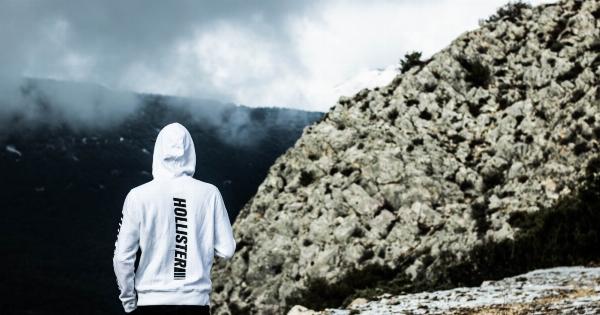As the temperature drops and winter sets in, many individuals experience an increase in back pain.
Whether you suffer from chronic back discomfort or are prone to occasional bouts, the winter season can exacerbate these symptoms, making daily life more challenging. In this article, we will delve into the reasons why back pain intensifies in cold weather and explore some ways to find relief and prevent further discomfort.
The Impact of Cold Weather on Back Pain
When the weather turns cooler, certain physiological and environmental factors come into play, contributing to the worsening of back pain. Below are some key reasons why your back may ache more during the winter months:.
1. Muscles and Joints Stiffen
Cold weather causes muscles and joints to contract, leading to stiffness and decreased flexibility. This can lead to increased strain on the back and potentially aggravate underlying conditions such as herniated discs or muscle imbalances.
Stiff muscles also reduce blood flow to the affected area, hindering the body’s ability to repair and alleviate pain.
2. Reduced Physical Activity
During winter, people tend to engage in fewer outdoor activities and exercise less. The sedentary lifestyle and reduced physical activity can contribute to weight gain and muscle deconditioning, both of which place added stress on the spine.
Additionally, limited sunlight exposure during winter affects vitamin D levels, which plays a crucial role in bone health and strength.
3. Changes in Barometric Pressure
Barometric pressure, also known as atmospheric pressure, fluctuates with changes in weather conditions. Many individuals with back pain report increased discomfort during drops in barometric pressure.
The change in pressure can affect the fluid-filled discs in the spine, causing them to expand or contract, irritating nearby nerves and leading to pain and stiffness.
4. Slip and Fall Risks
Winter comes with icy or slippery surfaces that increase the risk of slip and fall accidents. These accidents can result in sudden jolts or impacts to the back, potentially causing muscle strains, sprains, or even fractures.
The fear of falling may also lead to tense muscles and altered movement patterns, further contributing to back pain.
5. Shoveling Snow
For those living in regions with heavy snowfall, shoveling snow becomes an unavoidable chore during winter. However, this activity can place immense strain on the back, especially when done improperly or by individuals with pre-existing back conditions.
The repeated bending, lifting, and twisting motions involved in snow shoveling can lead to acute injuries or worsen existing ones.
6. Psychological Factors
The winter season often brings about psychological and emotional changes in individuals. Some people experience seasonal affective disorder (SAD), a type of depression linked to reduced sunlight exposure.
Psychological distress can result in increased muscle tension and sensitivity to pain, making back pain feel more intense and prolonged.
Relief and Prevention Strategies
While winter may intensify back pain, there are steps you can take to find relief and prevent further discomfort. Here are some strategies to consider:.
1. Stay Active
Even though the cold weather may deter you from exercising outdoors, finding alternative ways to stay active is crucial for maintaining back health.
Engage in indoor workouts, such as yoga or Pilates, that help improve flexibility, strengthen core muscles, and promote overall well-being. Regular physical activity also contributes to weight management, reducing the strain on your back.
2. Practice Good Posture
Be mindful of your posture, especially when sitting or standing for extended periods. Avoid slouching and make use of lumbar supports or ergonomic chairs to maintain proper spinal alignment.
Additionally, regular stretching breaks at work or during daily activities can help alleviate muscle tension and stiffness.
3. Keep Warm
Bundle up in warm clothing to protect your muscles and joints from the cold. Wearing layers and using heat packs or hot water bottles can help relax stiff muscles and reduce pain.
Applying heat therapy to the affected areas can increase blood flow and promote healing.
4. Use Proper Lifting Techniques
If you must shovel snow or engage in other activities that involve lifting heavy objects, it is crucial to use proper lifting techniques. Bend your knees, engage your leg muscles, and lift with your legs rather than your back.
Avoid twisting motions, and take frequent breaks to rest and stretch.
5. Maintain a Healthy Diet
Eating a balanced diet that supports bone health is vital for preventing back pain. Ensure you consume sufficient calcium, magnesium, and vitamin D to promote strong bones and reduce the risk of conditions like osteoporosis.
A healthy diet also contributes to overall wellness and weight management.
6. Seek Professional Help
If your back pain worsens or becomes debilitating, it is essential to seek professional help.
Consult with a healthcare provider or a physical therapist who can evaluate your condition and provide personalized advice, treatments, or exercises to alleviate your pain.
Conclusion
While winter brings colder temperatures and challenging conditions, it doesn’t mean your back pain has to worsen.
By understanding the factors that intensify back pain during the winter months and taking proactive measures to prevent or address them, you can find relief and continue to live a fulfilling life, even during the coldest times of the year.




























